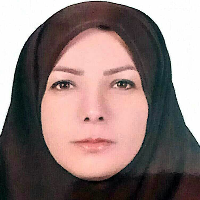Conceptual model of the role of urban space in improving the quality of life in historical contexts
In addition to performing all its standard functions in other urban areas, an urban space in a historic district should play its role at a higher multifaceted level matching the characteristics of a historic district with established identity. Accordingly, the present work aimed to discover how the components of an urban space, on the one hand, and the constituent elements of the flow of life in a historic district, on the other, are linked and interact so as to enable reasonable management of urban space potentials in a historic district and their proper application to enhance the quality of life for the residents and users.
Theoretical Framework
The model consisted of six components defining the following factors: the environmental component, with life quality in micro‑spaces and environmental sustainability as criteria; the empirical-aesthetic component, with old-new area integration and quality of urban landscape as criteria; the functional component, with variety in environment usage, environmental liveliness and quality, safety and security, and transportation and accessibility as criteria; the socio-cultural component, with social liveliness and cohesion and maintenance of population balance as criteria; the economic component, with economic liveliness and stability and flexibility of development plans as a criterion; and the temporal component, with time management in public spaces and continuity of place as criteria.Generated based on the urban space components, the presented conceptual model offered a new approach to urban planning and management, and was concerned with all the urban regeneration measures adopted in historic districts. Functioning on local, regional, urban, and extramural scales, it can also assume applications in the quality assessment of measures adopted in public arenas within historic districts.
The above strategy will in turn keep indigenous residents in historic contexts, have immigrants to those areas return, and bring about socio-economic and environmental sustainability. Employing logical reasoning, the Delphi method, and expert opinions, this descriptive-analytical study first discussed the urban space components and their qualitative requirements. Next, the dimensions and measures of the quality of urban life were analyzed, and their factors concerning the urban space and environmental quality and topics formed on urban design, planning, and management were identified based on the theoretical views found in the literature. In the next step, the factors extracted based on the characteristic features of historic districts were monitored and reviewed. The 91 factors obtained from the Delphi method were reduced to 64 after views and comments from about forty experts in the field were applied. Finally, the results were presented as a conceptual model describing the role of urban spaces on quality‑of‑life enhancement in historic urban districts.
According to the findings, there are many physical–functional and environmental qualities in public urban spaces that can guarantee the arena’s success in provision of the residents and users of historic districts with satisfaction. However, taking notice of economic activities and social mobility in these districts is fundamental to the effectiveness of a measure adopted for enhancement of the quality of life in public arenas within historic districts. Meanwhile, a rise in the sensitivity of local communities to the values of historic districts and the potentials of public arenas for enhancement of the quality of life therein encourages them to assume an active role in the application of these arenas and the local communities’ socio-economic potentials in enhancement of the quality of public arenas. This can also enable these communities to express problems and propose solutions; in some cases, it can even lead to innovative financing ideas for project implementation. In tandem with urban planning, it ensures the sustainability of public arenas in historic districts, and improves the quality of life for their residents and users. Therefore, the issues of socio-cultural livability and dynamic economy are the cornerstones of the formation of quality spaces within historic districts, and the quality of life will not improve regardless of the triad of the environment, society, and economy.
The presented conceptual model, based on the urban space components, offers a new approach to urban planning and management, and is concerned with all the urban regeneration measures adopted in historic districts. Functioning on local, regional, urban, and extramural scales, the model can also assume applications in the quality assessment of measures implemented in public arenas within historic districts. Here is a brief description of the intervention measures adopted for these districts and their regeneration process based on the proposed model.The socio-cultural component. Contextualizing, contributing to/collaborating with, providing a process orientation for, innovating, and influencing the satisfaction of residents and users in public areas, utilizing the contribution/collaboration from the users of public arenas, delegating authority to non‑governmental organizations for utilization management, allowing for effective, constructive interaction among the organizations involved in the quality enhancement of historic districts and observing the pertinent legal frameworks, clarifying the procedures and promoting the accountability of officials, and respecting the cultural, social, and economic structures of life in the district.The empirical-aesthetic component. Integrating old and new spaces within public arenas while respecting the features of their historic districts and taking notice of the mass and space simultaneously and avoiding shell designs.The environmental component. Reducing environmental pollution and protecting energy resources and the natural heritage.The functional component. Providing a favorable impact on space liveliness and enhancing social inclusion to be able to hold various events.The economic component. Helping businesses flourish and promoting tourism.The temporal component. Taking notice of nightlife, holding seasonal, monthly, and weekly events and recognizing the sense of place and making an effort to preserve it within the environment.
- حق عضویت دریافتی صرف حمایت از نشریات عضو و نگهداری، تکمیل و توسعه مگیران میشود.
- پرداخت حق اشتراک و دانلود مقالات اجازه بازنشر آن در سایر رسانههای چاپی و دیجیتال را به کاربر نمیدهد.


